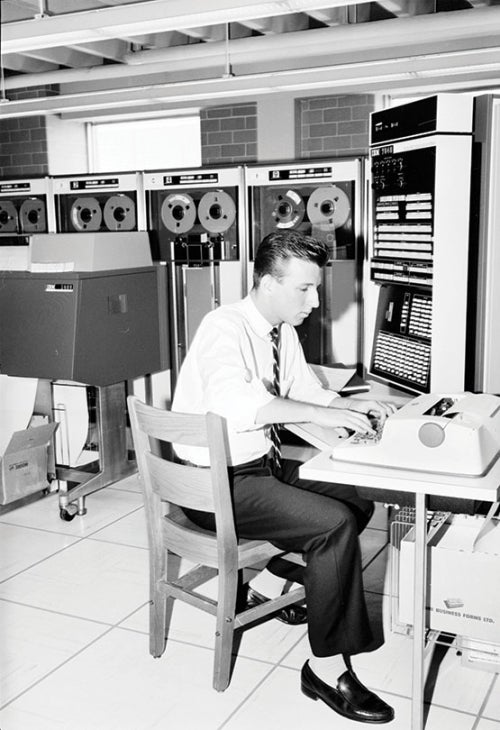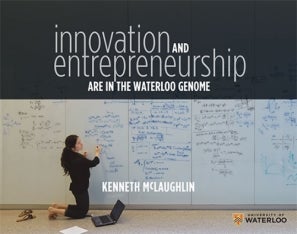
Waterloo's IP policy drives innovation
Historian Ken McLaughlin launches new book — Innovation and Entrepreneurship are in the Waterloo Genome

Historian Ken McLaughlin launches new book — Innovation and Entrepreneurship are in the Waterloo Genome
By Stacey Ash Marketing and Strategic CommunicationsWhen industry works hand-in-hand with researchers, ownership of intellectual property (IP) rights worth millions of dollars can be at stake.
At many institutions, IP rights are closely tied to corporate donations. Other universities view them as income.
The University of Waterloo was among the first universities to make their position clear: Intellectual property is owned by the inventor.
It was a bold stance, and one that the institution has, at times, had to fight to defend. But it attracted researchers with entrepreneurial drive, fueled the growth of new companies and transformed a small manufacturing city into a global high-tech hub.
In his new book, Innovation and Entrepreneurship are in the Waterloo Genome, historian Ken McLaughlin explores some of the pivotal moments that helped shape Canada’s innovation university.

The University of Waterloo was among the first schools to open its computer labs to undergraduate students. Partnerships with industry helped fuel Waterloo's emergence as a computer science leader — but corporate interests had to be carefully balanced with the University's creator-owns Intellectual Property policy. (Photo courtesy of Special Collections and Archives, University of Waterloo)
Excerpt from Innovation and Entrepreneurship are in the Waterloo Genome, Chapter 8:
“‘Stop the trucks,’ Wes Graham shouted into the telephone as a tractor-trailer full of computer hardware donated by Digital Equipment Corporation (DEC) in 1984 was leaving Toronto for the University of Waterloo.
In light of restrictions on government support, the University was anxious for these additions to its computer capabilities. But there was a problem: Graham insisted that the University follow its 1973 practice recently used in establishing Watcom by which professors retained the intellectual property rights for work that they created. DEC was equally adamant that work created from the use of the hardware that DEC was donating to the University would be the property of DEC. The confrontation was dramatic. It shocked Graham’s colleagues, who were in the room and applauded when he made the call. The trucks were stopped, Graham’s terms were agreed upon, and President Douglas Wright, jubilant, was photographed unloading the computer equipment on Waterloo’s campus.
Major computer companies, such as DEC, Commodore and IBM saw distinct advantages in participating with the University of Waterloo and, in particular, in allocating equipment and research funds for University projects. In this as in other initiatives, President Wright’s entrepreneurial spirit was of critical importance. Digital Equipment’s $24 million donation to the University of Waterloo provided eight new VAX machines that made possible both a complex project to computerize the Oxford English Dictionary and development of the software that launched Waterloo Maple. Were it not for Graham’s dramatic intervention and Wright’s skill at promoting the University’s reputation, these and a host of other projects would never have succeeded.
 Order your copy online through the University of Waterloo Bookstore.
Order your copy online through the University of Waterloo Bookstore.

Read more
Meet the 13 exceptional students representing Waterloo’s newest grads

Read more
Here are the people and events behind some of this year’s most compelling Waterloo stories

Read more
Special issue of Waterloo Magazine celebrates women who lead, and explores equity in education and the workplace
The University of Waterloo acknowledges that much of our work takes place on the traditional territory of the Neutral, Anishinaabeg, and Haudenosaunee peoples. Our main campus is situated on the Haldimand Tract, the land granted to the Six Nations that includes six miles on each side of the Grand River. Our active work toward reconciliation takes place across our campuses through research, learning, teaching, and community building, and is co-ordinated within the Office of Indigenous Relations.